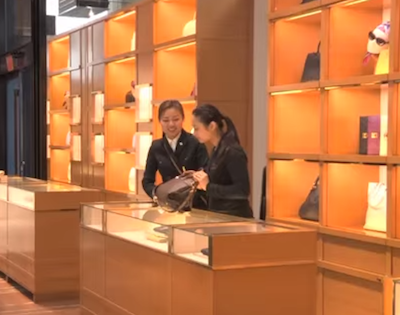98pc of mobile purchases are remote: Euromonitor
NEW YORK – For all the excitement surrounding proximity-based purchases, the vast majority of mobile sales occur remotely, according to a Euromonitor analyst at Mobile Commerce Daily’s Mobile Research Summit: Data & Insights 2015.
Proximity-based mobile payments allow retailers to tie together the purchase journey, since the prerequisite accounts follow consumers as they progress toward a sale. Although adoption rates remain marginal, poster child success stories such as Starbucks have established a strong model for aspirants.
“Proximity of mobile payments has become the holy grail,” said Michelle Evans, senior consumer finance analyst at Euromonitor, Chicago. “There’s certainly a lot of hype and not a lot of traction.
“Mobile is transforming that predictable consumer journey into dizzying twists and turns,” she said.
“The battles are heating up to control that flow of money across devices.”
Mobile Research Summit: Data & Insights 2015 was organized by Mobile Commerce Daily.
Heating up
Approximately $300 billion in sales are flowing through mobile devices, according to Ms. Evans.
In 2019, this number is expected to grow four-fold, but will still only account for around 4 percent of total sales across channels, meaning that enormous potential remains.
While smartphones are the key to proximity-based purchases, most mobile sales occur remotely, on tablets in particular. Ms. Evans argued that this preference is because tablets resemble computers.
Britain has the highest rate of tablet use. Eighty percent of the country’s mobile commerce sales take place on tablets and the average user spends $1,057 per year.
The most common reasons for avoiding mobile commerce are screen size, security concerns, cumbersome interfaces, inconvenience, an in-store preference, poor connectivity and difficult payment processes.
Most of these barriers can be mitigated. Phones with larger screens, tighter security, compelling user experiences and seamless payment processes are all within the grasp of retailers and other vested parties.
Although remote, or “couch commerce,” is the dominant shopping mode on mobile, retailers are captivated by the prospect of in-store mobile commerce.
Broadly speaking, proximity mobile commerce can boost revenue, reduce costs, enhance the customer experience and further the brand proposition.
Revenue can rise by accelerating the check-out line, driving frequent purchases from habit-forming customers and attracting customers during low peaks in business through targeted marketing.
Retailers can bundle sales to reduce processing fees and align staff with business needs more effectively through enhanced operational transparency.
Also, the customer experience can be enhanced through loyalty programs and ease of use.
“As the path to purchase becomes increasingly digitized, the act of executing payments is increasingly shifting further and further into the background,” Ms. Evans said.
This disappearing act improves the customer experience by making transactions frictionless. Since consumer information is stored, the need to continuously present payment credentials vanishes.
In many situations, this ease of use is transformative.
For example, the taxi business traditionally entailed spending several minutes flagging down a car, potentially enduring a chaotic ride and then either paying with cash or dealing with an irritating payment system. Uber changed all of this by making securing a ride seamless, holding the driver accountable and making payment weightless.
Social key
Social commerce will facilitate the rise of proximity-based mobile commerce through the network effect of apps. Hypothetically, as Facebook introduces a payment program, log-in credentials and contained user information can be voluntarily transferred across conjoined apps, removing the need for multiple sign-ups.
Platforms in emerging markets have seen the widest embrace of social commerce, while platforms in more developed nations have seen tentative consumer adoption.
Part of the reason for this is that platforms such as Alibaba have holistic networks that easily integrate payment platforms.
Also, consumers in Western nations are reluctant to cede their personal information to social platforms. Nonetheless, Facebook, Twitter and Pinterest, among others, have introduced buy buttons and many are taking cues from platforms with proven mobile commerce such as Line.
“[Social platforms are asking], how can we monetize this reach that we have, this network of people that we have?” Ms. Evans said.
Final Take
Joe McCarthy, staff reporter on Luxury Daily, New York


